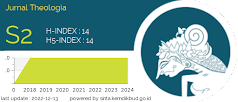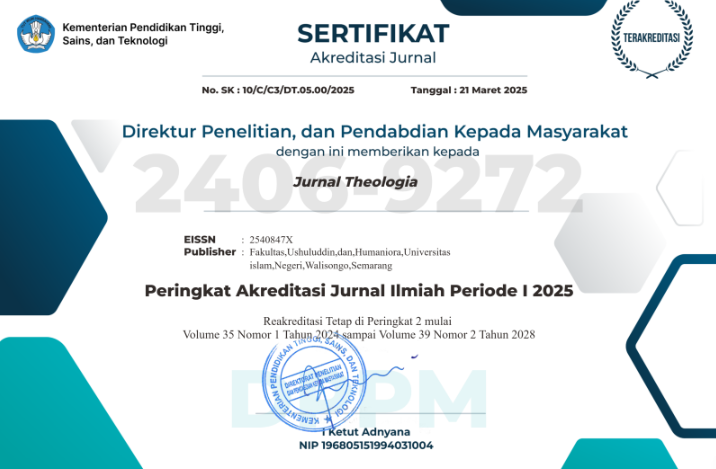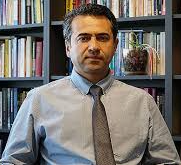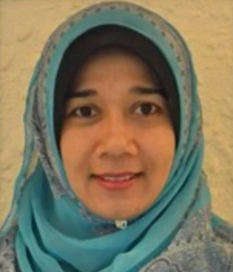TOLERANSI BERAGAMA DAN MAHABBAH DALAM PERSPEKTIF SUFI
DOI:
https://doi.org/10.21580/teo.2012.23.1.1763Keywords:
mahabbah, toleransi, sufi, habl min an-nasAbstract
Dalam kacamata kaum sufi, tidak ada orang lain (the other) di duniaini. Mereka melihat orang lain sebagai sebuah kesatuan makhluk
yang bernaung di bawah kasih sayang Tuhan. Landasan cinta
merupakan titik berpijak bagi mereka untuk melihat orang lain.
Dalam pandangan kaum sufi, semua manusia adalah indah.
Keindahan dalam pandangan itulah yang membimbing mereka
untuk tidak melihat orang lain secara lebih rendah. Keindahan
pandangan itu juga meliputi para penganut agama yang berbedabeda. Ajaran kedamaian, cinta dan kasih sayang yang diususng para
sufi, bagian yang cukup menarik untuk disingkap, sekaligus sebagai
upaya membangun hubungan umat beragama yang harmonis.
Tulisan ini akan memaparkan kasih sayang dan toleransi beragama
dalam persektif tasawuf.
Downloads
References
Bahri, Media Zainul, Satu Tuhan Banyak Agama: Pandangan Sufistik Ibn ‘Arabi>, Ru>mi>, dan al-Ji>li>, (Bandung: Mizan, 2011).
Basyu>ni>, Ibra>hi>m, Nasy’ah at-Tas}awwuf al-Isla>mi>, (Kairo: Da>r al-Ma’>arif, tth.).
Frager, Frager, Heart, Self & Soul: The Sufi Psychology of Growth, Balance, and Harmony, (Wheaton, Illinois: Quest Books, Theosophical Publishing House, 1999).
Hadi W.M., Abdul, “Jalan Cinta dalam Tasawuf; Uraian Lembah-Lembah Keruhanian dalam Mantiq al Thayr Karya Attar”, dalam Manusia Modern Mendamba Allah; Renungan Tasawuf Positif (Jakarta: IIMaN, 2002).
Helminski, Kabir, The Knowing Heart; A Sufi Path of Transformation (Boston & London: Sambala, 1999).
Jala>l ad-Di>n Ru>mi>, The Mathnawi of Jala>l al-Di>n Ru>mi>, terj. Reynold A. Nicholson, London: Luzac & Co. Ltd., 1968).
Khan, Hazrat Inayat, The Unity of Religious Ideals, (London: Barrie dan Jenkins, 1980).
Khumaisy, At}iyah, Rabi’ah al-‘Adawiyah, (Kairo: Maktab Mah}mu>diyah, 1330 H).
Madjid, Nurcholish, “Kata Pengantar” dalam Komaruddin Hidayat & Ahmad Gaus AF (ed), Passing Over, Melintasi Batas Agama, (Jakarta: Gramedia Pustaka Utama & Paramadina, 1998).
Nasr, Seyyed Hossein, dan William C. Chittick, Islam Intelektual: Teologi, Filsafat dan Makrifat, (Depok: Perenial Press, 2001).
Nasr, Seyyed Hossein, Knowledge and the Sacred, (New York: State University of New York, 1989).
----------------, The Heart of Islam; Enduring Values of Humanity, (New York: Harper San Fransisco, Harper Collins, 2002).
Noer, Kautsar Azhari, Ibn Arabi : Wahdat al-Wujud dalam Perdebatan, ( Jakarta: Paramadina, 1995).
Nurbakhsh, Javad, Love: The Path of Unity, (Oxford: Oneworld, 1999).
Qorib, Muhammad, Lentera Kasih Sayang: Membentang Ukhuwah Menggapai Jannah (Jakarta, 2007), buku belum diterbitkan.
Schuon, Frithjof, Memahami Islam, (Bandung: Pustaka, 1992).
Sholeh, A. Khudlori, Wacana Baru Filsafat Islam, (Yogyakarta: Pustaka Pelajar, 2004).
Smart, Ninian, The Dimensions of the Sacred, (Cambridge: Camribge University Press, 1998).
Smith, Huston, Agama-agama Manusia, (Jakarta: Yayasan Obor Indonesia, 1991).
Syukur, M. Amin, Tasawuf Bagi Masyarakat Modern, (Yogyakarta: Pustaka Pelajar, 1996).
Usman, Fathimah, Wahdat al-Adyan, Dialog Pluralisme Agama (Yogyakarta: LKiS, 2002)





















